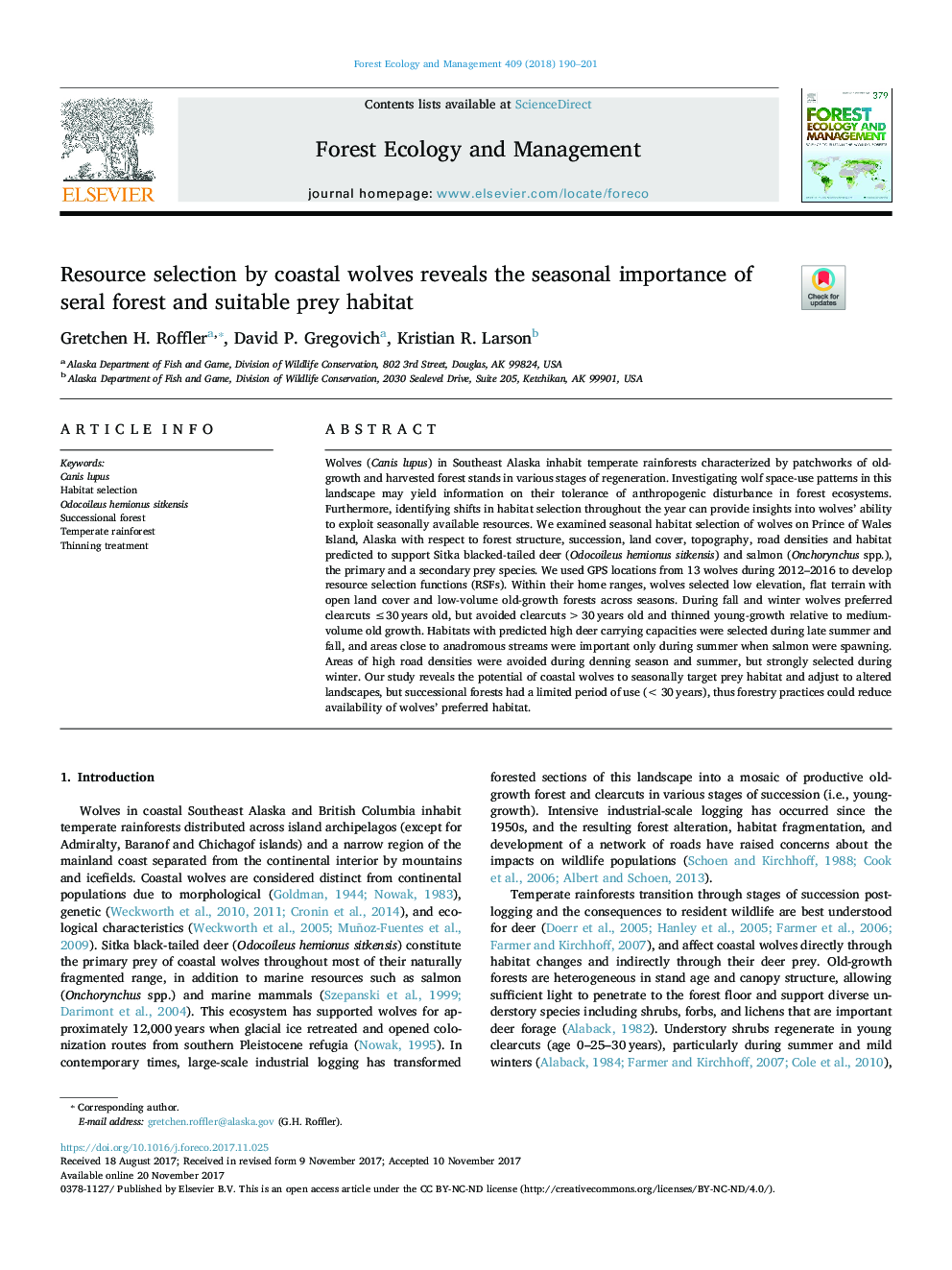| کد مقاله | کد نشریه | سال انتشار | مقاله انگلیسی | نسخه تمام متن |
|---|---|---|---|---|
| 6541882 | 1421349 | 2018 | 12 صفحه PDF | دانلود رایگان |
عنوان انگلیسی مقاله ISI
Resource selection by coastal wolves reveals the seasonal importance of seral forest and suitable prey habitat
ترجمه فارسی عنوان
انتخاب منابع توسط گرگ ساحلی نشان دهنده اهمیت فصلی جنگل های مرزی و زیستگاه شکارچی مناسب می باشد
دانلود مقاله + سفارش ترجمه
دانلود مقاله ISI انگلیسی
رایگان برای ایرانیان
کلمات کلیدی
موضوعات مرتبط
علوم زیستی و بیوفناوری
علوم کشاورزی و بیولوژیک
بوم شناسی، تکامل، رفتار و سامانه شناسی
چکیده انگلیسی
Wolves (Canis lupus) in Southeast Alaska inhabit temperate rainforests characterized by patchworks of old-growth and harvested forest stands in various stages of regeneration. Investigating wolf space-use patterns in this landscape may yield information on their tolerance of anthropogenic disturbance in forest ecosystems. Furthermore, identifying shifts in habitat selection throughout the year can provide insights into wolves' ability to exploit seasonally available resources. We examined seasonal habitat selection of wolves on Prince of Wales Island, Alaska with respect to forest structure, succession, land cover, topography, road densities and habitat predicted to support Sitka blacked-tailed deer (Odocoileus hemionus sitkensis) and salmon (Onchorynchus spp.), the primary and a secondary prey species. We used GPS locations from 13 wolves during 2012-2016 to develop resource selection functions (RSFs). Within their home ranges, wolves selected low elevation, flat terrain with open land cover and low-volume old-growth forests across seasons. During fall and winter wolves preferred clearcuts â¤30â¯years old, but avoided clearcuts >30â¯years old and thinned young-growth relative to medium-volume old growth. Habitats with predicted high deer carrying capacities were selected during late summer and fall, and areas close to anadromous streams were important only during summer when salmon were spawning. Areas of high road densities were avoided during denning season and summer, but strongly selected during winter. Our study reveals the potential of coastal wolves to seasonally target prey habitat and adjust to altered landscapes, but successional forests had a limited period of use (<30â¯years), thus forestry practices could reduce availability of wolves' preferred habitat.
ناشر
Database: Elsevier - ScienceDirect (ساینس دایرکت)
Journal: Forest Ecology and Management - Volume 409, 1 February 2018, Pages 190-201
Journal: Forest Ecology and Management - Volume 409, 1 February 2018, Pages 190-201
نویسندگان
Gretchen H. Roffler, David P. Gregovich, Kristian R. Larson,
